Queen's taxpayer-funded costs up 13% in 2017-18
- Published
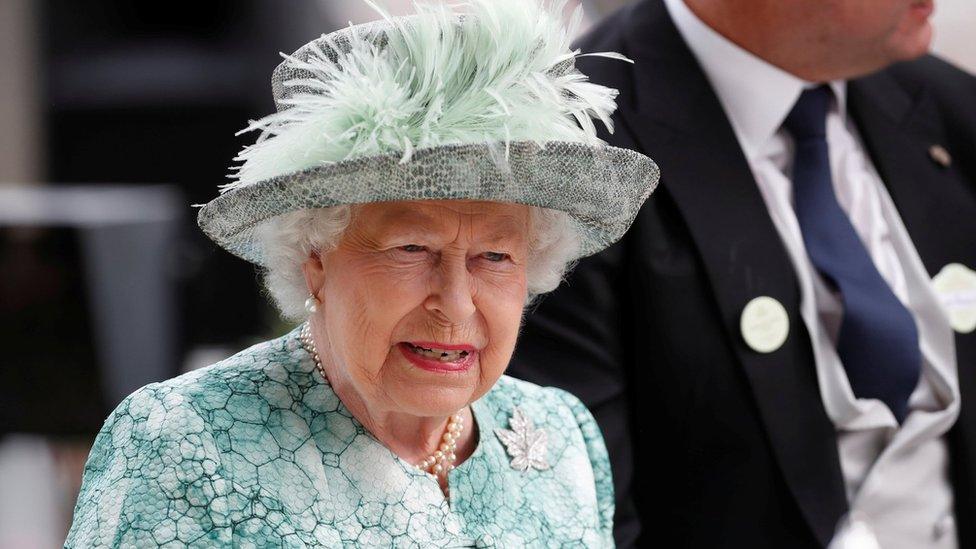
The Queen's taxpayer-funded costs rose by 13% in the past year, partly due to the refurbishment of Buckingham Palace.
Accounts show the public funds used by the Queen for official expenditure and duties went up from £41.9m to £47.4m.
More than £4m was spent on the initial phase of improvements at the palace, including the removal of old wiring, while £21.4m went on payroll costs.
The "core" sovereign grant is based on 15% of the net surplus of the Crown Estate, as it was two years previously.
But from this year, the total grant is based on 25% of the surplus - an increase intended to meet the costs of refurbishing Buckingham Palace.
Overall, the total Sovereign Grant was £76.1m - but £28.7m was transferred to reserves, most of which is intended to pay for the renovation.
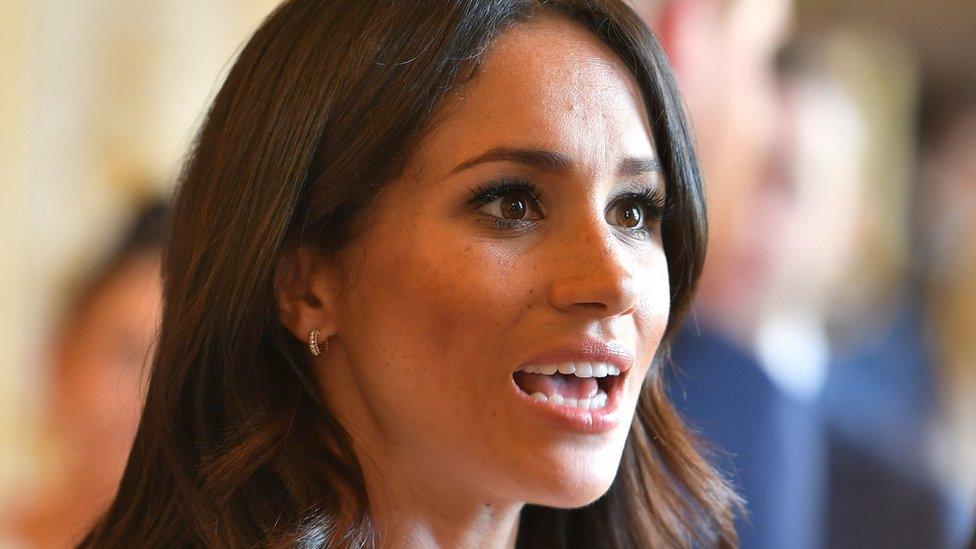
The Sovereign Grant accounts also show an increase in travel costs, from £4.5m to £4.7m.
The most expensive trip was Prince Charles's tour of India and the Far East in November 2017, which cost £362,149.
Over the year, the prince used the Royal Train - at a cost of about £20,000 a trip - twice as often as the Queen.
The Prince of Wales and Duchess of Cornwall carried out 619 UK engagements last year. The Queen undertook 154 official engagements, down from 162 the previous year.
Separately, figures from Clarence House - the Prince of Wales' private office - show an increase in funding of 40% for the Duke and Duchess of Cambridge and Duke of Sussex including capital expenditure and transfer to reserves.
The total went from £3.5m to £5m. A Palace spokesman declined to be drawn on how much of the rise was related to Meghan, the new Duchess of Sussex.
Separate figures show the Crown Estate provided £329.4m to the Treasury, a like-for-like increase of around 4% compared with last year's figures for England only.

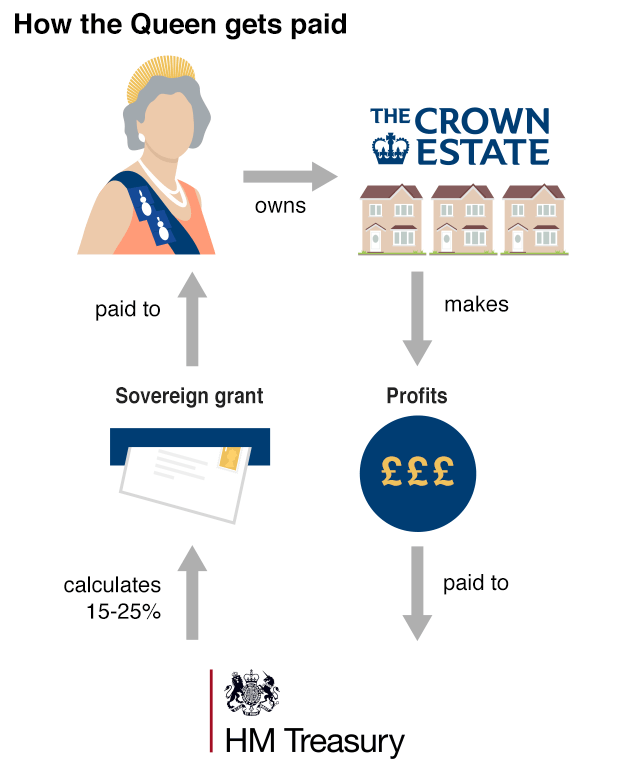

What is the Crown Estate?
An independent commercial property business and one of the largest property portfolios in the UK
The majority of assets are in London, but the estate also owns property in Scotland, Wales and Northern Ireland
Holdings include Windsor Great Park and Ascot racecourse, but most of the portfolio is made up of residential property, commercial offices, shops, businesses and retail parks

Sir Michael Stevens, the new keeper of the Privy Purse, who oversees the monarch's finances, said: "There are three generations of the Royal Family at work together in support of the Queen.
"Each generation brings its own style and personality. What everyone shares is a desire for the monarchy to reflect and serve all parts of our country and the wider Commonwealth."
On the renovations of Buckingham Palace, he said: "The programme addresses the urgent need to overhaul the Palace's essential services - some of which have not been updated since the 1950s.
"These important works will help avert the very real danger of a catastrophic building failure such as a flood or fire."
Graham Smith of the group Republic, which campaigns for the monarchy to be abolished and for an elected head of state, said it was a "big lie" that the Queen's household is paid for by the Crown Estate.
"The reality is that the monarchy costs the British taxpayer dear, more than £345m a year. That's a symptom of a secretive and unaccountable institution," he said.
- Published27 June 2017
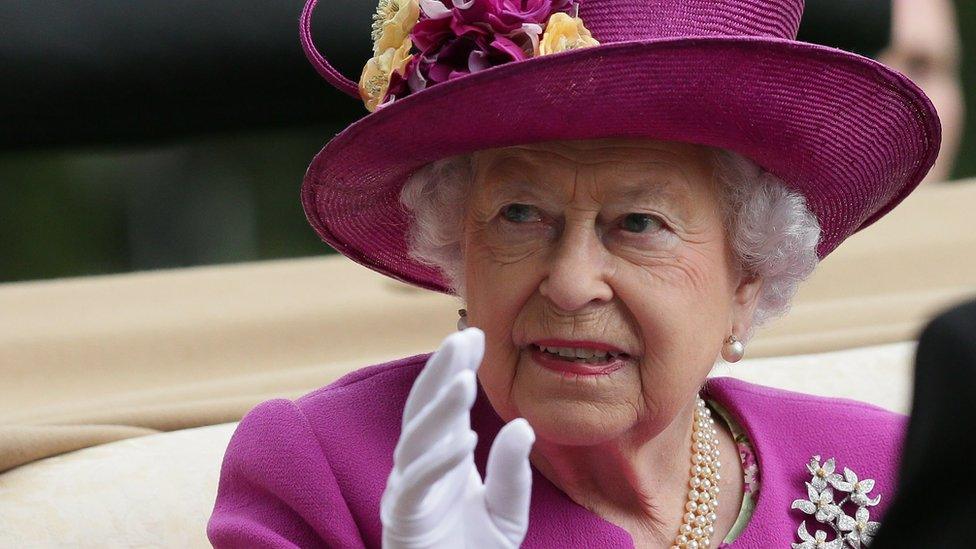
- Published15 March 2017
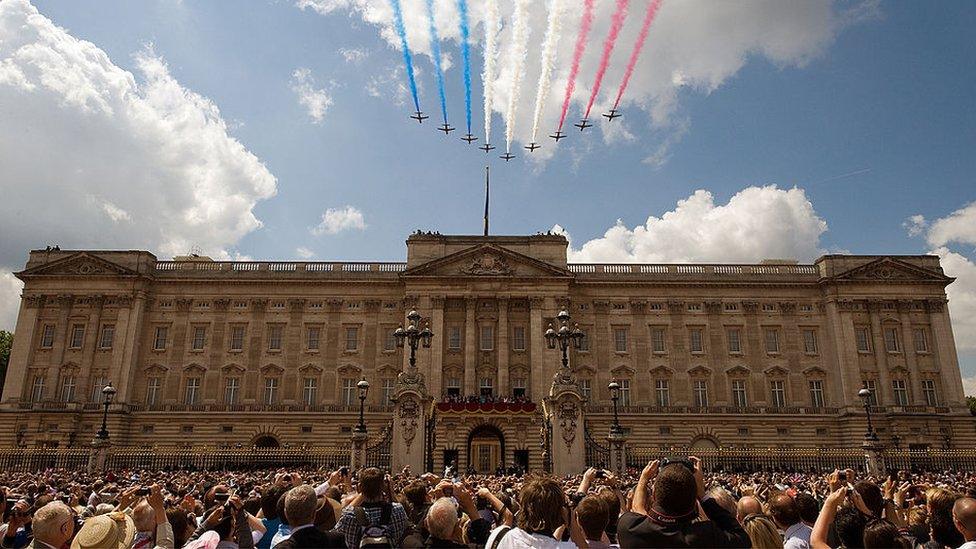
- Published28 June 2016

- Published18 October 2011